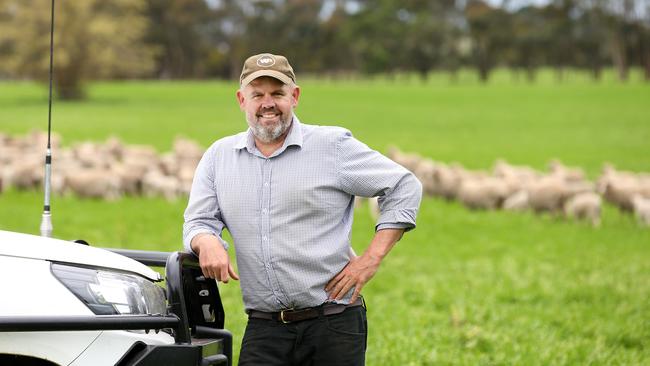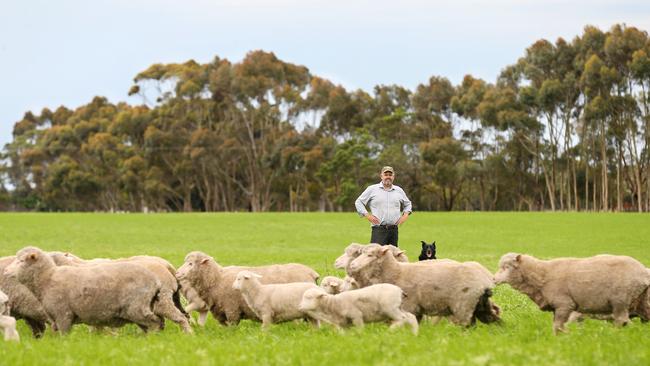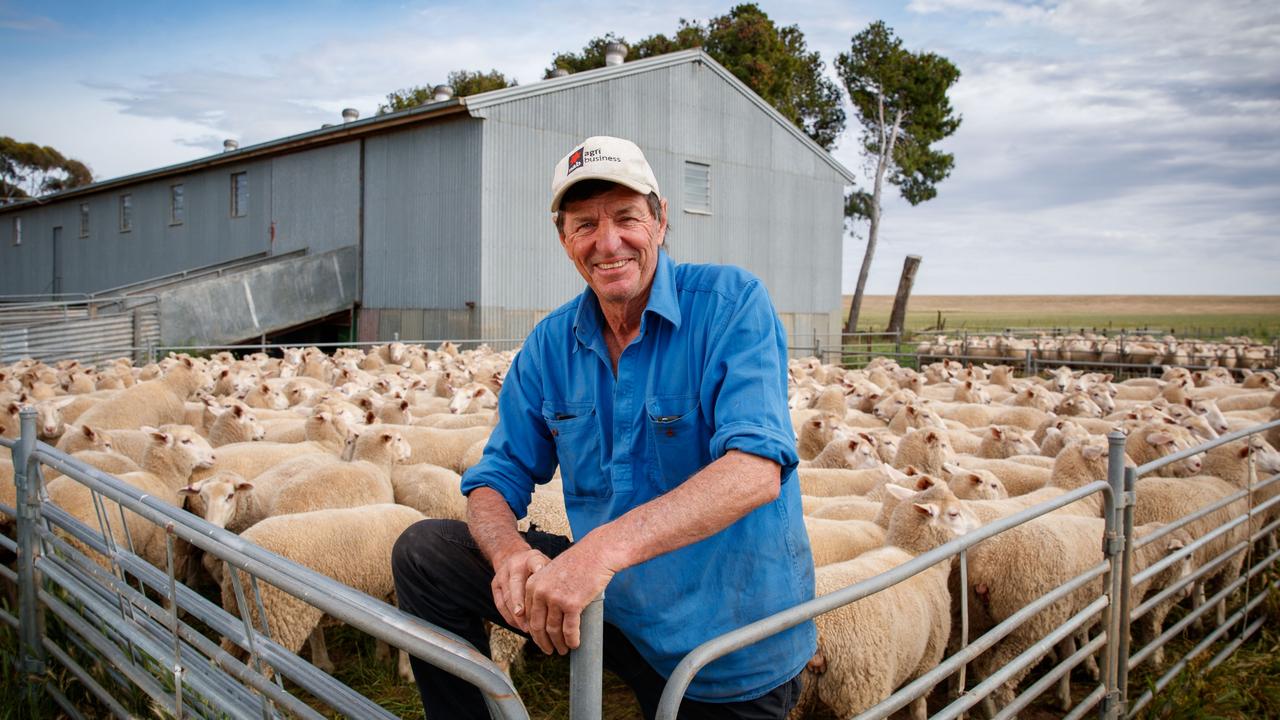Composite sheep the better option for Hamilton farmer
With a change of bloodlines this Western District flock hit the ground running.

DIVERSIFICATION for Western District farmer Howard McCorkell comes in the form of running two different breeds of sheep.
Despite his country being in the heartland of composites, more than half the 7000 ewes he joins are Merinos.
He acknowledges a love of the wool-cutting breed, but said it was the numbers that stacked up when it came to maintaining Merinos when many others in the district were opting to go totally down the composite path.
Howard took over the running of the 1220ha property south of Hamilton from his parents in 2012, after leasing it from them before that.
He immediately set about analysing the business by employing consultants, who suggested they move part of their enterprise into composites.
“We were joining our cull Merino ewes to Border Leicesters and then using the progeny to produce second- cross lambs,” Howard said.
“The composites stacked up better than that option, so we moved that way.”
There was nothing particularly amiss with the main Merino flock, but the lack of premium paid for the very white wool from a small-bodied sheep meant it did not create the best gross margin.
“We sought some advice from classer Craig Wilson and he suggested we try another bloodline, to boost wool cut and to improve body size,” Howard said.

POLL POSITION
THAT search led them to the Woodpark Poll Merino stud at Hay in NSW, “which had the genetics that we wanted to take us in the way we wanted to head”.
“We wanted sheep with a good body and good wools,” Howard said.
“It was an interesting decision given that we were taking sheep from the Riverina to the Western District, but the young rams have handled it well.”
What didn’t work so well was bringing down a flock of ewes from the Riverina to try to jump-start their move towards a different bloodline.
Howard said this simply “did not turn out as well as we had hoped” so they decided to breed up from the existing ewes they had and gradually infuse the new bloodline.
The first few years, Howard bought about 20 rams and looked to the offering from the flock ram section at Woodpark Poll. While still offering Australian Sheep Breeding Values they were a cheaper option than operating at the stud’s annual auction and enabled him to build up the ram battery.
“We selected rams that had high ASBVs for fleece weight, as that is what we were trying to lift,” Howard said.
“We wanted more depth and body in our sheep which would give us better (more profitable) options when it came to selling them.”
BEYOND EXPECTATIONS
SEVERAL joinings down the track, the influence of the new bloodline has done exactly what they’d hoped and something they didn’t expect.
Wool cuts have risen by 20 to 30 per cent, from 3-4.5kg greasy fleece weight to 4-5.5kg.
This has had a huge impact on the profitability of the Merino enterprise in the livestock operation, as there was simply more wool to sell.
What they hadn’t counted on was the impact on micron.
“We had thought that we would lose the fineness in the flock, but we haven’t changed much if at all,” Howard said. “We were in the 16-18-micron range and we have stayed there.”
The impact on body size has made their sheep more attractive to sell as mutton, with stock now consigned direct to the abattoirs and sold on a grid basis. While the composite lambs are mostly sold as suckers in spring, there is no ability yet to do the same with the Merino wether lamb s.
“We may not be able to sell those Merino wether lambs before 12 months simply due to the way the genetics perform down here,” Howard said.
“But we are happy to keep them as wool growers and sell them later on as mutton.”
GO FIGURE
WHEN it comes time to selecting genetics, ASBVs have allowed Howard to narrow down the large range of rams on offer by looking at specific traits.
“If you try to look at too many traits, you can’t achieve any real gains quickly and that is why we have been reasonably particular in what we look at,” he said.
“We go to Lambpro (at Holbrook, NSW) to buy our composite rams and there might be 1000 on offer, and we go to the Woodpark Poll auction and there are 200 in the line-up.

“There is a lot to take in and to make an assessment on, so the ASBVs allow us to focus on what we are looking to improve or achieve. The ASBVs have also allowed us to make comparisons between different studs.”
The management of the composite and Merino flocks is done to make the most of feed supplies in the 650mm rainfall country.
Pastures included ryegrass, clover and phalaris, with the feed pinch period felt from January to March.
The composite flock lambs earlier than the Merinos, with the ewes lambing in winter. This means the composites are old enough to make the most of the spring flush of feed and most can be sold before the feed quality falls in summer.
The Merino flock lambs slightly later, in early spring, and given that most of the composite lambs are sold as suckers, country is freed up for the Merino weaners to grow out.
MAKES SENSE
LAMBING percentages range from about 120-130 per cent in the composites, and up to 95 per cent in the Merinos.
Even with the boom in lamb prices, the comparable marked increase in wool prices combined with the now higher wool cut in his sheep see Merinos outclassing the composites for the past couple of years when the enterprises are benchmarked.
“I may have had a slightly different opinion five years ago, but the success of the composites financially is really dependent on lambing percentages,” Howard said.
While he is happy with his progress to date and the figures for Merinos are outclassing the composites, Howard said he knew there was more he could do with his Merino flock.
“We enter the Peter Westblade wether trial and we see where our sheep are compared to other flocks,” he said.
“It is another way of benchmarking your performance and we can see that there is room we can move in terms of making our Merinos better.
“I was lucky to have bought a good flock of sheep that my parents had worked hard on, and have been able to use these as a base to make an even more productive flock.”
MERINO SHEEP ARE THE MIX MASTERS


